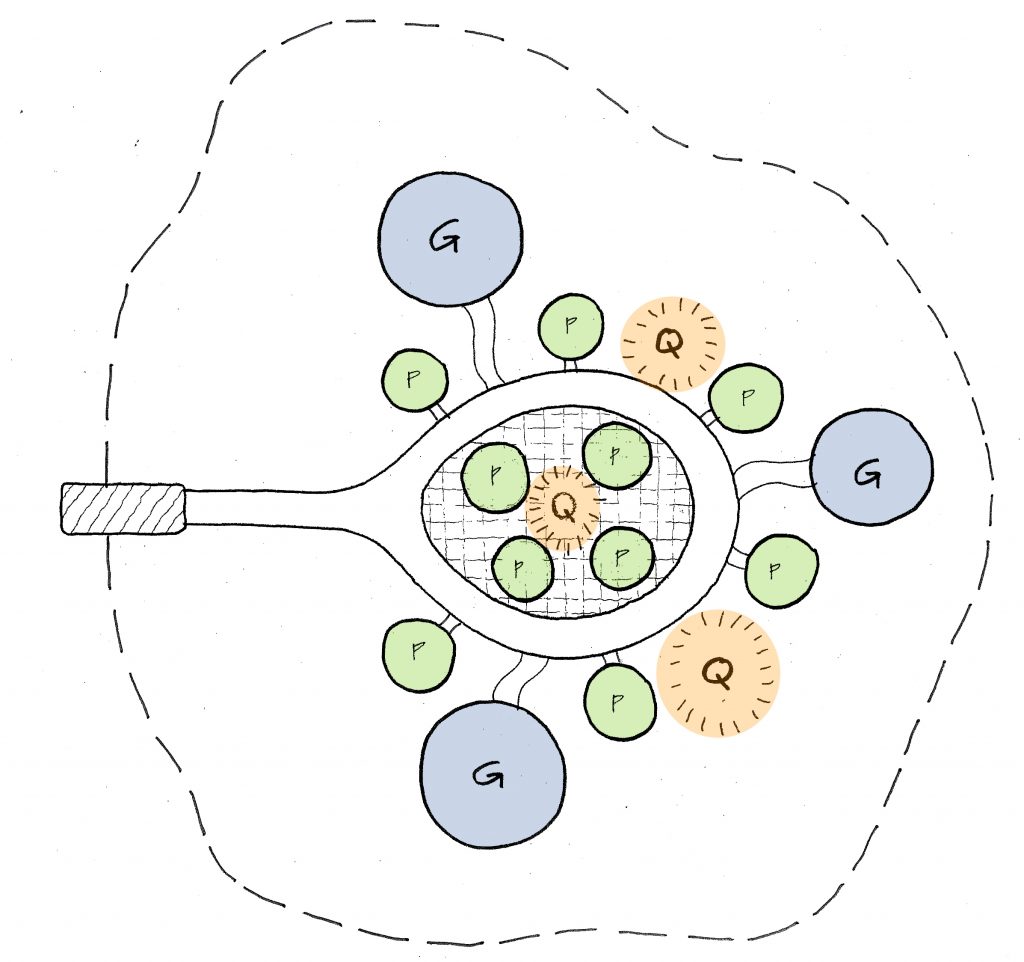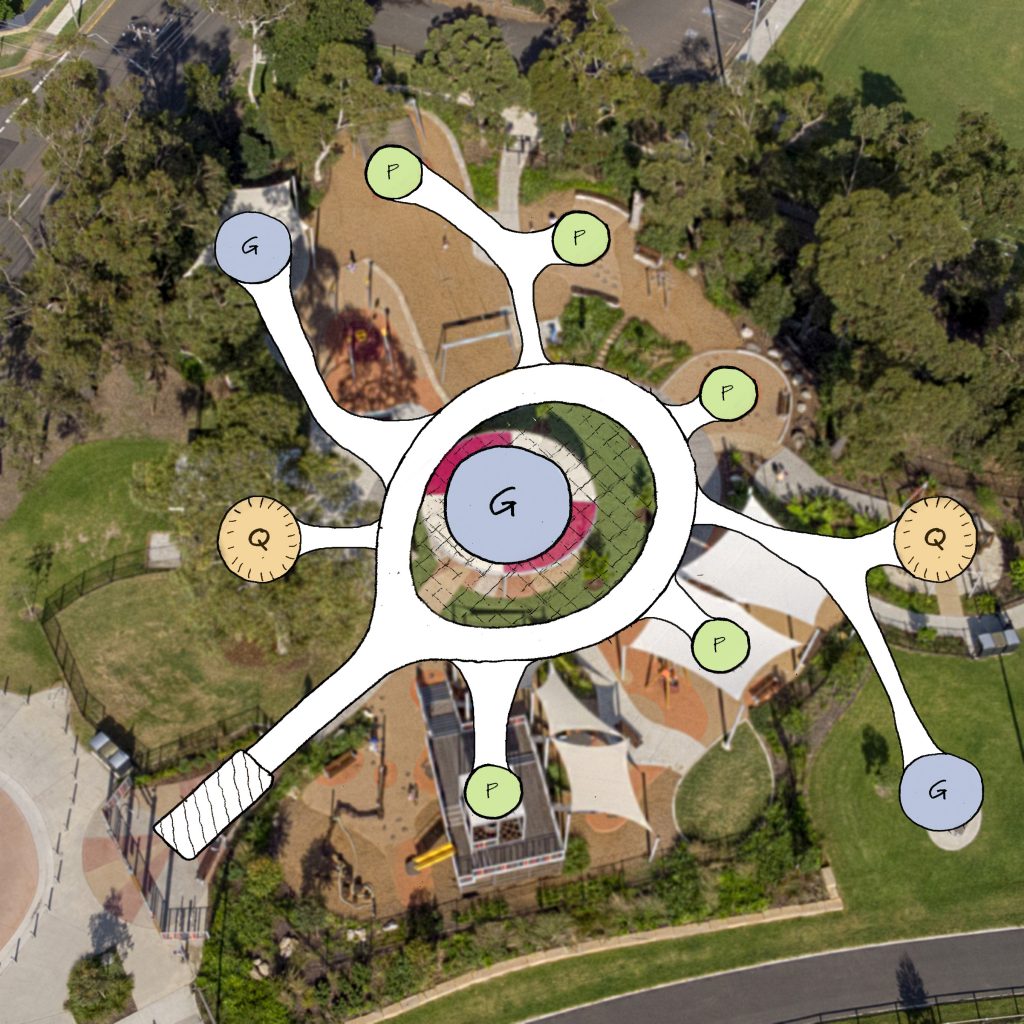As a designer, there are countless theories and principles you learn throughout your career. Putting those theories into practice is a whole other problem – so often, budget, site constraints, politics, design trends, and a myriad other issues mean that the ideals in your head cannot actually be achieved.
That’s why we were thrilled to see one of our key design principles – the ‘tennis racquet’ model – come to life at Lionel Watts Reserve.
The tennis racquet model is a spatial design principle which, when followed, ensures that play spaces are easy to navigate through a clear and unambiguous arrangement of primary and secondary paths. The playground entrance leads to a central, looped navigation path (the tennis racquet). Play pods (P), quiet respite areas (Q) and gathering spaces (G) are then connected to the tennis racquet via secondary paths.
This type of layout is important for people with disabilities, as it makes a new space easy to understand, and ensures that all key elements of the space are connected through accessible paths of travel.
Check out the comparison below… so satisfying!

